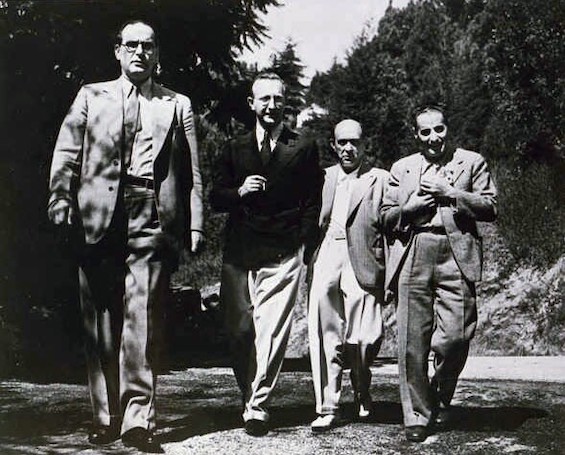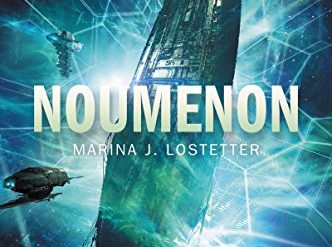
One of Adolf Hitler’s greatest strategic errors was to force tens of thousands of Jews to flee Germany in the 1930s. Of course, the policies that provoked this exodus were central to Nazi ideology. But they proved self-defeating, since scores of brilliant scientists were among those who left, Albert Einstein first among them. And many of them played pivotal roles in the Allied war effort, notably the Manhattan Project that produced the first nuclear weapons but in many other ways as well. They were far from alone, however. Many of Germany’s most honored writers, filmmakers, and actors fled, too, along with anti-fascist refugees from Italy and elsewhere in Europe. Hundreds found their way to California, becoming key figures in Tinseltown’s Golden Age. They are the subject of Anthony Marra’s poignant second novel about wartime Hollywood, Mercury Pictures Presents.
Estimated reading time: 5 minutes
They shaped the look and feel of Hollywood’s Golden Era
Among the luminaries who descended on Hollywood in the 1930s were Bertolt Brecht, Billy Wilder, Thomas Mann, Josef von Sternberg, Erich von Stroheim, Otto Preminger, Ernst Lubitsch, and Fritz Lang, among many others.
As TIME magazine noted in 2020, “The look, the sound, and the speech of Hollywood’s Golden Age did not originate in Hollywood. Much of it came from Europe, through the work of successive waves of immigrants during the first half of the 20th century. The last several of those waves brought a group of traumatized artists who were lucky enough to escape Hitler’s death trains and extermination camps. All were antifascists; a few were Communists; most were Jews. These were Hitler’s gift to America—prodigious individuals who enriched the film culture and the intellectual life of our nation, and whose influence continues to resonate.”
Anthony Marra tells the immigrants’ story through the experiences of a handful of lesser-known emigrés. However, in an original twist, he tells the story of two Italian refugees from Fascism. Germans prominently enter the story too, but the Italians take center stage.
Mercury Pictures Presents by Anthony Marra (2022) 446 pages ★★★★★

A drama centered in wartime Hollywood
Marra centers his tale in the executive offices of Mercury Pictures, a struggling B-list studio founded and headed by the Feldman twins. We focus on Artie Feldman, the “younger” (by eight minutes) of the identical twins. Artie and Ben Feldman loathe each other. Fortunately, they’re separated by 3,000 miles, since Artie runs the studio in Hollywood and Ben manages relations with the banks and the investors out of New York City.
Artie, now middle-aged, is consumed with insecurity, obsessed with his shrinking hairline. He wears toupées, which are lined up on the heads of mannikins behind the desk in his office. Artie has a name for each of them. And he is terrified of having to leave for Washington, DC, to appear before the reactionaries and isolationists in the United States Senate, where he is certain to be pilloried for leading the nation astray with “un-American” themes in the pictures he produces.
Exiles from Fascist Italy, too
Although he is a talented showman with an innate sense of what the public wishes to see on the screen, Artie’s protegé, Maria Lagana, now does much of the work credited to him on-screen. While the drama between the brothers Feldman plays out, we focus on Maria. “Long before she became his second-in-command, Maria and her mother had fled Italy as political exiles after Mussolini had her father, one of Rome’s most prominent lawyers, sentenced to internal exile in the Calabrian hinterlands.”
Later, as Maria rises through the ranks at Mercury Pictures, we pick up the tale of a young boy in the town where her father, Giuseppe Lagana, had been exiled. He has learned the photography trade at the shop where emigrés go for passport photos. And, after a long and colorful set of experiences that take him to Los Angeles years later, he arrives on Maria’s doorstop. He goes by the name Vincent Cortese. But that’s not his real name—and therein lies the tale at the heart of Marra’s plot.
As the story unfolds, we become aware just how deeply Hollywood is influenced by the emigrés. “You could map the march of fascism across Europe based on Mercury’s employment rolls,” Vincent muses. He realizes that he has yet to meet anyone at the studio who isn’t an immigrant.
About the author

Anthony Marra won the National Book Award in 2013 for his novel, A Constellation of Vital Phenomena. Mercury Pictures Presents is his second novel. He has also won accolades for his short stories and essays. Marra was born in Washington, DC in 1984. He earned a bachelor’s in creative writing from the University of Southern California and a Master of Fine Arts from the Iowa Writers’ Workshop. Marra was a Stegner Fellow at Stanford University from 2011 to 2013. He now lives in Oakland, California.
For related reading
This is one of The 20 best books of 2022 and of the Great mysteries about Hollywood.
I’ve also reviewed one of the author’s other earlier novels, A Constellation of Vital Phenomena (A searing inquiry into life during the Chechnyan War).
The New York Times carried an excellent review of the novel by Sarah Lyall, combined with snippets of an interview with the author, on July 30. You’ll find it at “Using Fiction to Summon the Glittering, Golden Age of Hollywood.”
You might also enjoy:
- The 10 best novels about World War II
- 20 most enlightening historical novels
- Top 10 historical mysteries and thrillers
And you can always find my most popular reviews, and the most recent ones, on the Home Page.


























